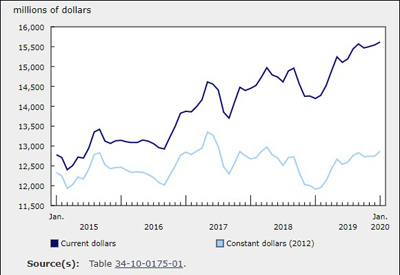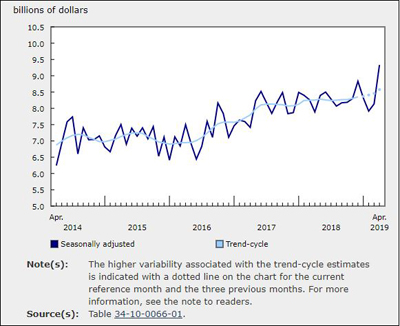Does Your Value-add Shop Cost Your Company New Business?

Oct 27, 2020
By Frank Hurtte
Let me start with a loud proclamation: I believe it makes sense for distributors to have a value-add shop. I see value-adds as a competitive differentiator. They provide the distributor with an easy way to sell logistically focused customer convenience, programming expertise, multiple part subassemblies, and when appropriate, complete solutions. In the case of products like linear bearings, bus bar, strut, and T-slot extruded aluminum systems, work done in the shop enables smaller customers to apply the product without purchasing the specialty tools required to create a customer solution of their own.
With all these great things in mind, why start an article with the heading, “Does your shop cost your company new business?” In the past three or four weeks, I have come across at least a dozen examples of distributor shops serving as a hindrance rather than an accelerator of business. All but two of these came from sellers.
The situation as seen through the eyes of the sellers involved.
Pandemic induced selling creates a situation where normal sales activities are difficult, especially with new/newer customers. Since shop services are a competitive advantage, many sellers have migrated their customer-directed conversations to the types of things their value-add departments can provide. While not as simple as selling products, opportunities still exist. Further, some customers, who used to apply a “do-it-yourself” approach, have become more open to bringing in outside services.
In a couple of instances, the value-add groups are not as busy as in the pre-COVID days. Bringing in new opportunities is a three-way win-win-win situation; good for the customer, good for the salesperson, and business for the value-add organization. But things happen.
The issues presented by these sales-types could be broken down into six categories:
1. The quote took too long to develop.
2. The quote did not follow the customer’s specifications.
3. The quote included extras not required to meet the customer’s expectations of the project.
4. The final quoted price was far higher than another provider.
5. The quote/job was over-engineered for the application.
6. The lead time quoted was unexpectedly long.
Nobody calls me to talk about situations where things worked perfectly. In the instance of these phone conversations, the customer did not purchase the project. Worse yet, the sellers felt the interaction damaged the opportunity for future work. Some of this appears to be miscommunication, lack of communication, or at least a break down in expectations. Other times, it may be the inexperience of the person quoting the project.
When it comes to prioritizing quotation flow, sellers expressed concerns with the value-add team “having their own agenda.” This point is concerning; most distributor owners and senior managers see value-add as a tool for driving business. It is not uncommon for the person running the group to have little or no customer-facing experience. Worse yet, in candid conversations, sellers and value-add folks have made comments which display at least a bit of animosity between the groups.
With these points as a backdrop, let’s explore a few things which might improve the situation. We will break them down using the topics above.
The quote took too long to develop
The key is setting expectations. Is there a published expectation for the time to develop quotations? For instance, a simple quote with no special parts will be completed in three working days. Understanding that some quotes require sourcing of special products where the price is not readily available, the quote might be extended to five working days. The salesperson and the person doing the quotation would both understand the timeframe. Should additional time be required, the salesperson and management would be notified ahead of time, and messaging for the customer developed. If gaining a foothold with the customer is a pivotal part of some larger strategic plan, upper management might decide to shift staffing priorities to improve the quotation time.
The quote did not follow the customer’s specifications
Again, communications and expectations are important. Many distributors publish internal documents covering the percentage of the distributor’s product which must be included in a design. A good rule of thumb is 60-70% of the content must come from lines the distributor represents. This makes good sense because the goal of the value-add organization is to drive more sales for the distributor. Simply stated, purchasing from the outside does little to move the overall sales needle forward.
Setting a limit like this provides the seller with an opportunity to convert products to the “home teams” products early in the sale. A statement/question like, “Well Mr. Customer, I see this includes many products we don’t sell. Do you mind if we substitute?” might save time, effort, and customer disappointment.
If the customer’s specifications are not appropriate or simply will not work in the environment, this should be communicated directly to the customer early in the design process. This avoids disappointment and eliminates work associated with a quotation which would not be appropriate to the customer. Extending a bit further, the salesperson involved may have some thoughts on the customer’s tolerance for change. If communicated early, workarounds to the specification problem might be found.
Thinking more about this topic. If a seller does not have a strong enough relationship with the customer to have frank discussions tied to the priorities of the value-add system, additional sales training (and coaching) may be required.
The quote included extras not required to meet the customer’s expectations of the project
This one is simple. The customer wants a little red wagon, but you end up providing the lunar land rover. Are there advantages to the lunar lander? Sure, it’s rugged, designed to last for years, and runs on solar power, but not every application requires the bells and whistles associated with the $38 M space wagon.
If there are options to improve the performance of the customer’s desired product, push the information out as options. Better yet, arrange a three-way call with the salesperson and the customer. Refine the specification. Determine what the customer really wants — before launching the quotation.
To be fair, many customers do not provide rock-solid specifications. Experts say most do not. Salespeople need to be trained to mine the customer for specifications before the quotation phase. This might include size, speed, load-bearing capacity, and many other things. Why not create a checklist if this is an ongoing issue for your organization? Sample specifications for various common types of value-adds might be useful — and create a comparison for lower-priced quotations from other organizations.
The final quoted price was far higher than another provider
Assuming the other guy had no real advantage, did not make a mistake in quoting the project, and the specifications were properly met, there should never (well maybe hardly ever) be a major discrepancy in the price.
Sometimes this happens by way of issues on the selling side of the business. Has the seller really done the proper job of gathering the specifications? Does the seller understand the situation well enough to know if additional extras will be added to the job later and give the value-add team the option of adding to the margin?
Other times it happens because of the value-add shop. For instance, projects with which the shop has no experience can be risky. Conversely, those which have been done countless times practically “engineer themselves.” If the competitor has done similar jobs with some degree of regularity, they may have a slight advantage.
Communications with the sales team might include projects the value-add team sees as easy and risk free. Finding this type of project leads to greater success. Determining if the project will be something the customer may repeat could potentially drive down the cost. This is something for management to consider when providing the quote and may not be part of the engineer quoting the project’s area of responsibility, but it is a best practice and part of good communications.
The quote/job was over-engineered for the application
We have already hit on the topic of value-add organizations not completely understanding the customer’s specifications or intent of the project, but it is important to review one of the key reasons for quote price differences. Over-engineering is defined by Wikipedia thusly:
Over Engineering is the act of designing a product to be more robust or have more features than often necessary for its intended use, or for a process to be unnecessarily complex or inefficient. Adding in the extra features and building with parts that have very robust specifications sometimes makes sense. However, in most instances, we would be better quoting those features and parts upgrades as options or adders. Once the price is set, upselling could turn into higher margins for both seller and shop. But getting the customer to commit is the first order of business.
The lead time quoted was unexpectedly long
Lead times are dynamic and can be difficult to manage. They are impacted by previous projects working their way through the system, staffing issues, parts delivery, and dozens of other issues. Not much can be done to prevent this, but publishing the current lead times for jobs your shop regularly completes does improve the situation.
To avoid the time spent developing a quotation only to learn the customer cannot wait for you to complete it, salespeople must give the customer at least some idea as to the time required before entering the quotation phase.
If you enter the quotation phase knowing the customer needs the completed project sooner than the ideal delivery date, we recommend options be presented which could expedite the project. This provides for some give and take for the customer and maintains a solid relationship.
Reviewing all of this, communications is key. So too is understanding the real strategic reason for building and maintaining a value-add group to the distributor. In most instances, the value-add is a tool for selling more product. For distributors selling new technologies, the value-add side of the business may serve as the place where the value of the technology is proven in the market. The value-add serves as the hardened spearhead for penetrating new applications or breaking into new industry segments.
The acceleration of the e-commerce model breaks down geographical barriers. Pressure builds on the artificial barriers created by distributor friendly manufacturers who limit competition by way of Areas of Prime Responsibility (APRs). The services provided by strong, local, knowledge-based distributors are the only ironclad protection distributors have against future attacks by Amazon and others.
We must grow our value-add services. More importantly, we must invest in continuous improvement in what we do. Let this serve as a catalyst for your improvement.
Frank Hurtte is the Founding Partner of River Heights Consulting. The Distributor Channel is a service of River Heights Consulting. Find out more: www.RiverHeightsConsulting.com.











